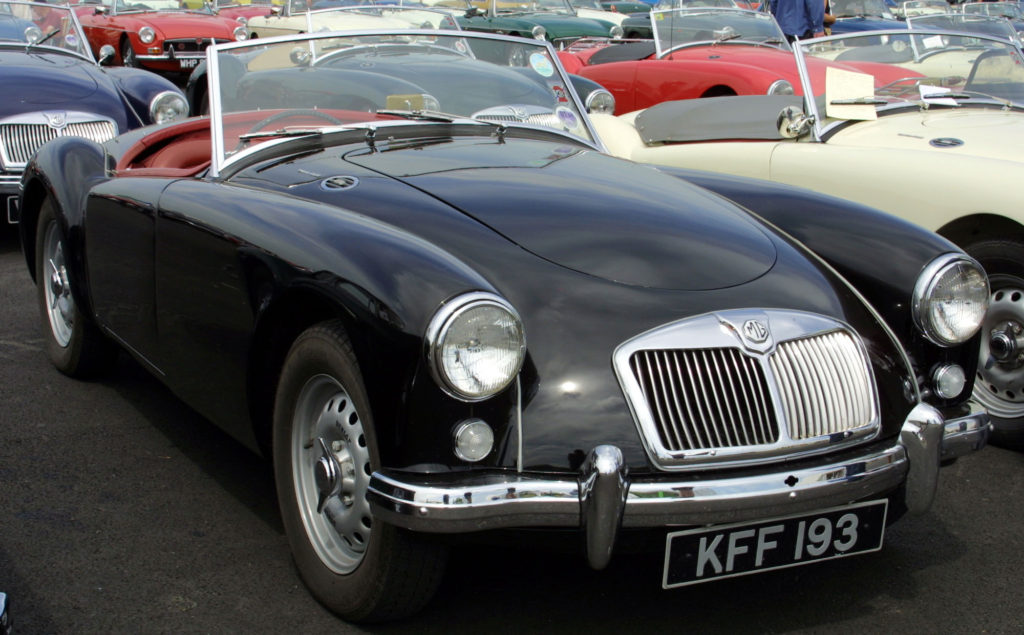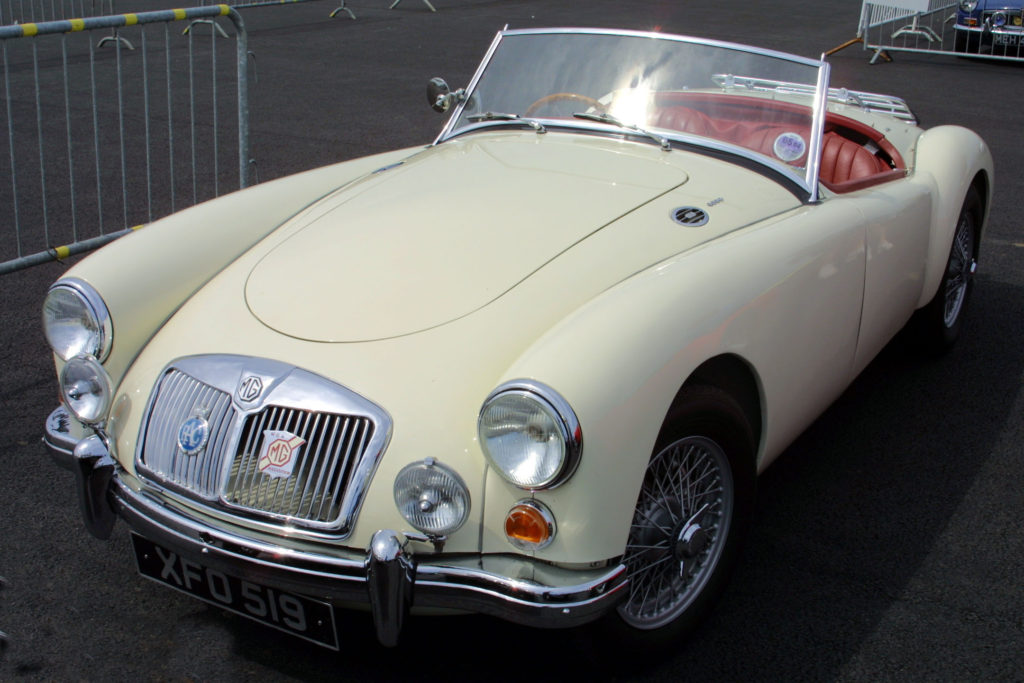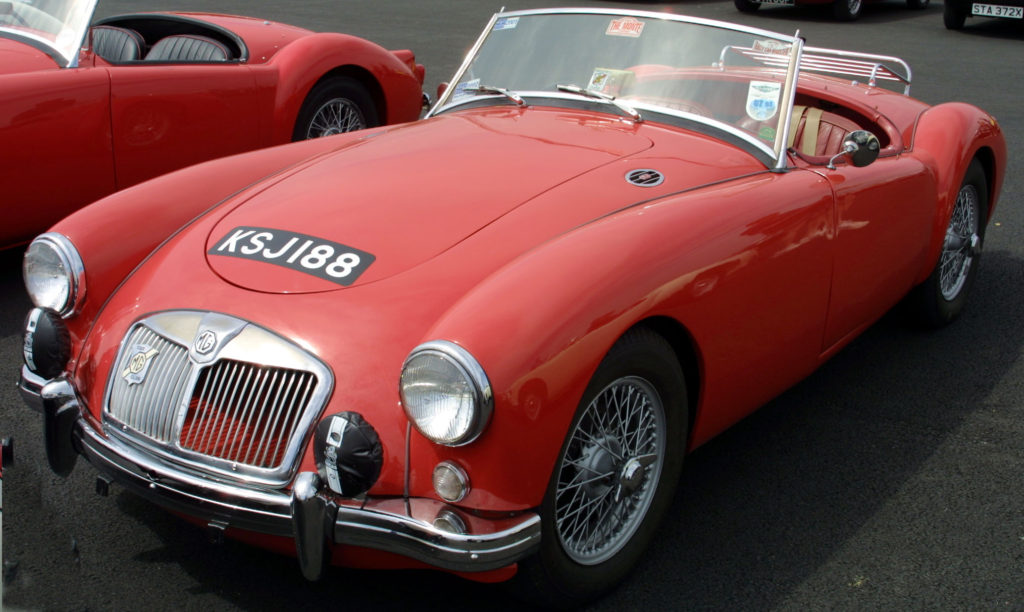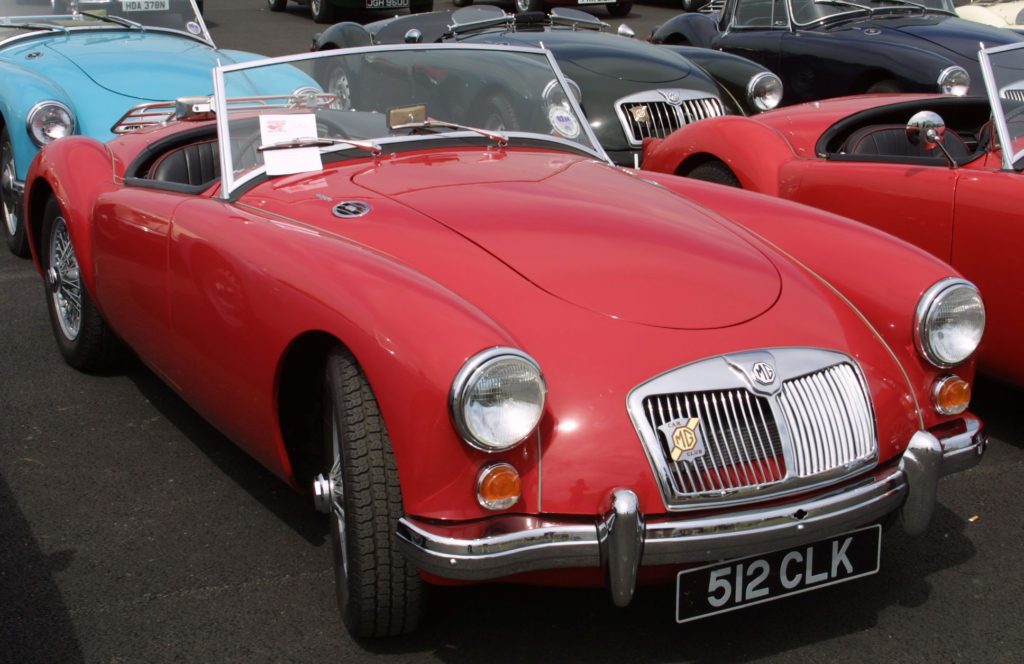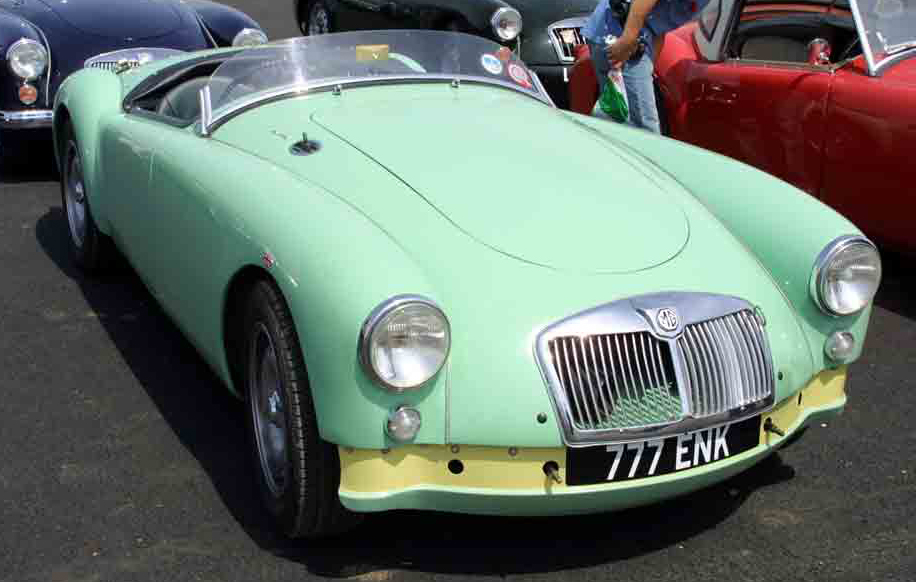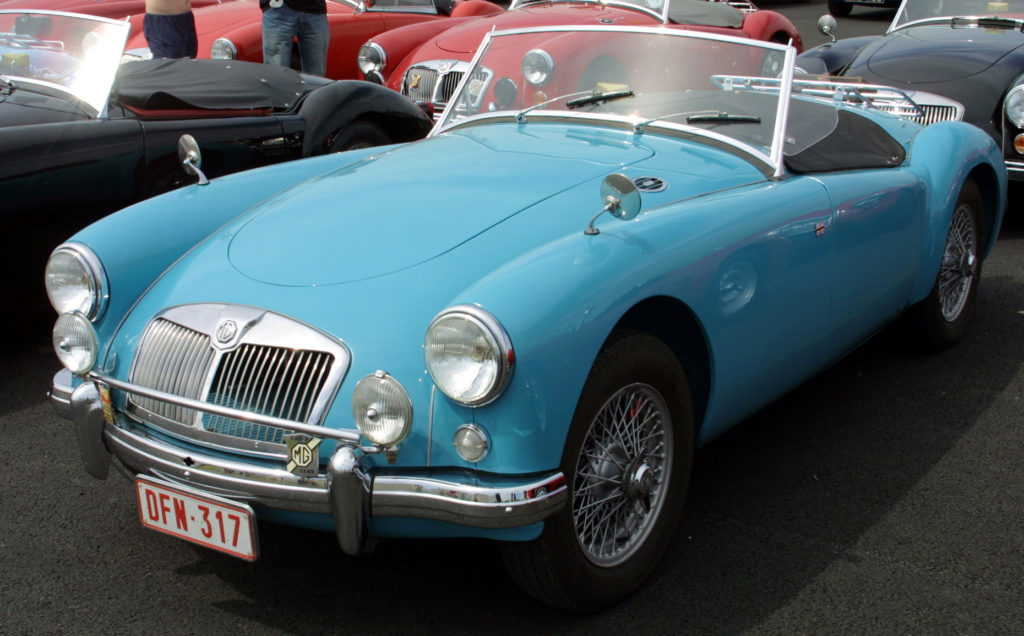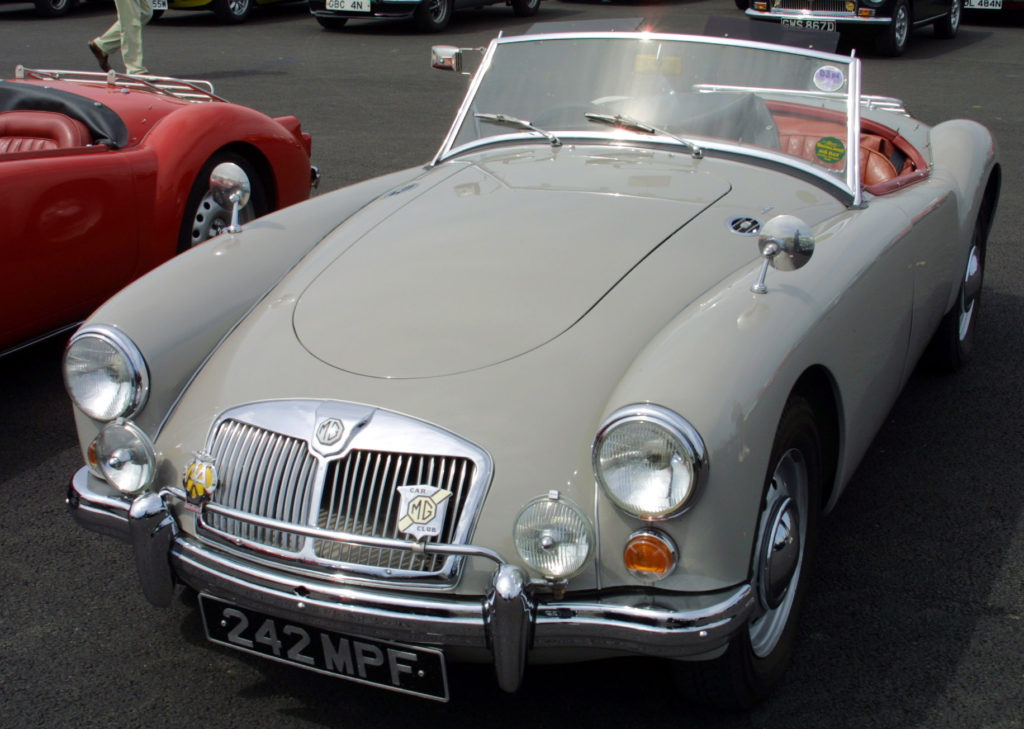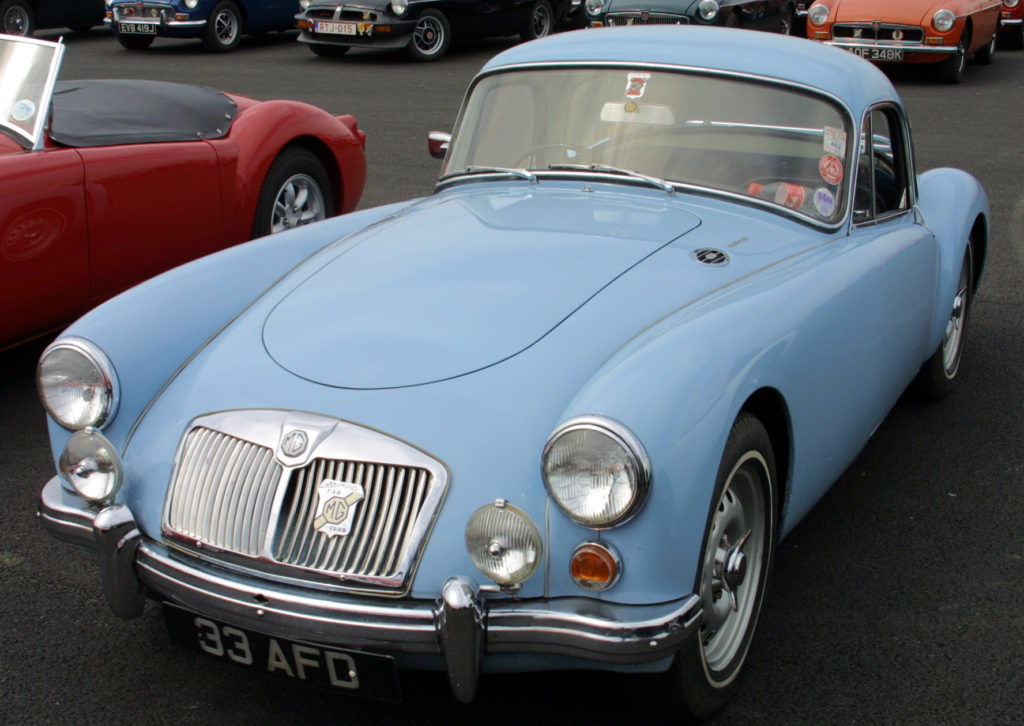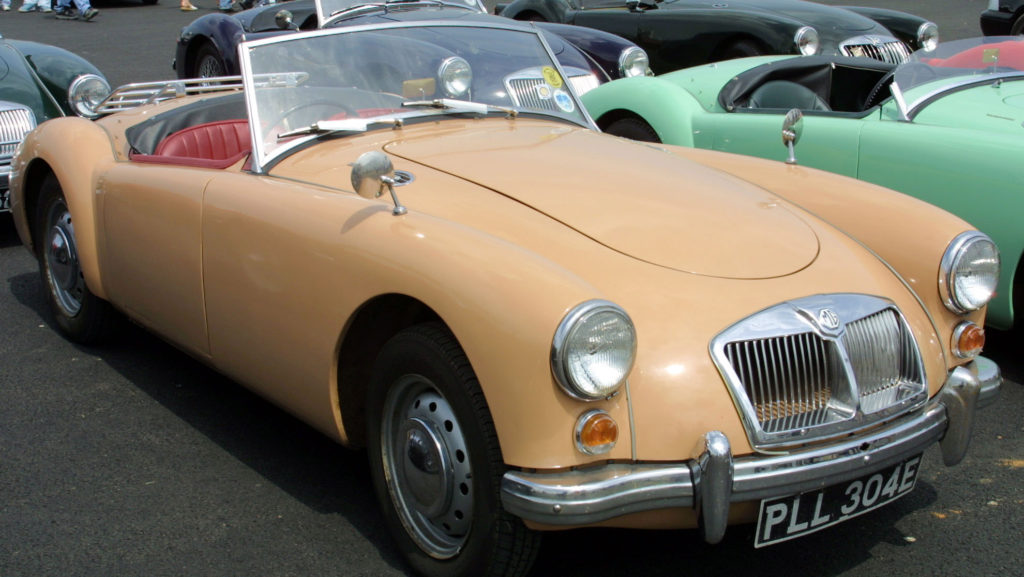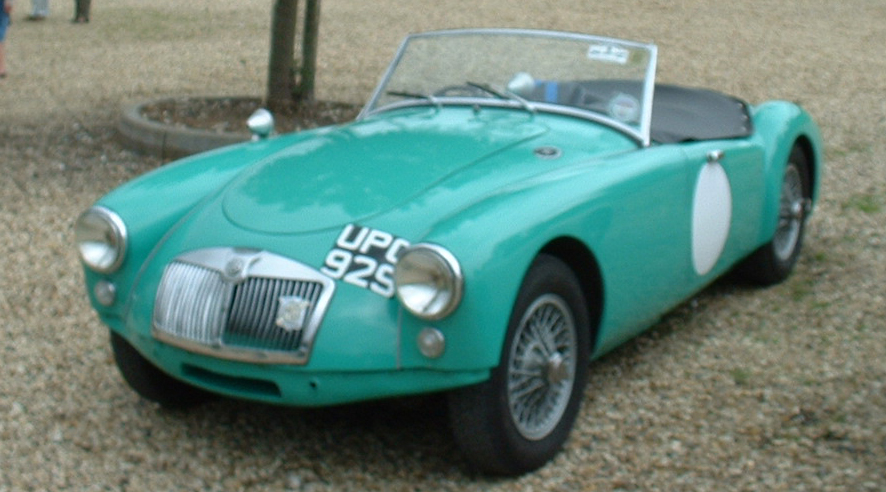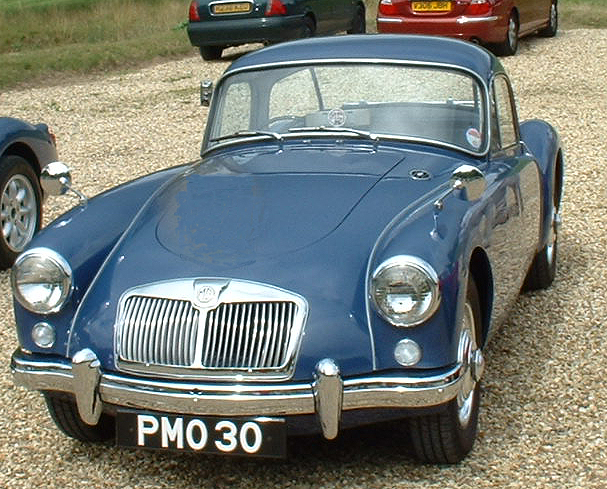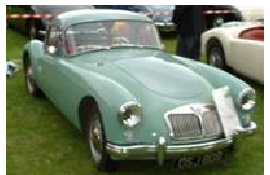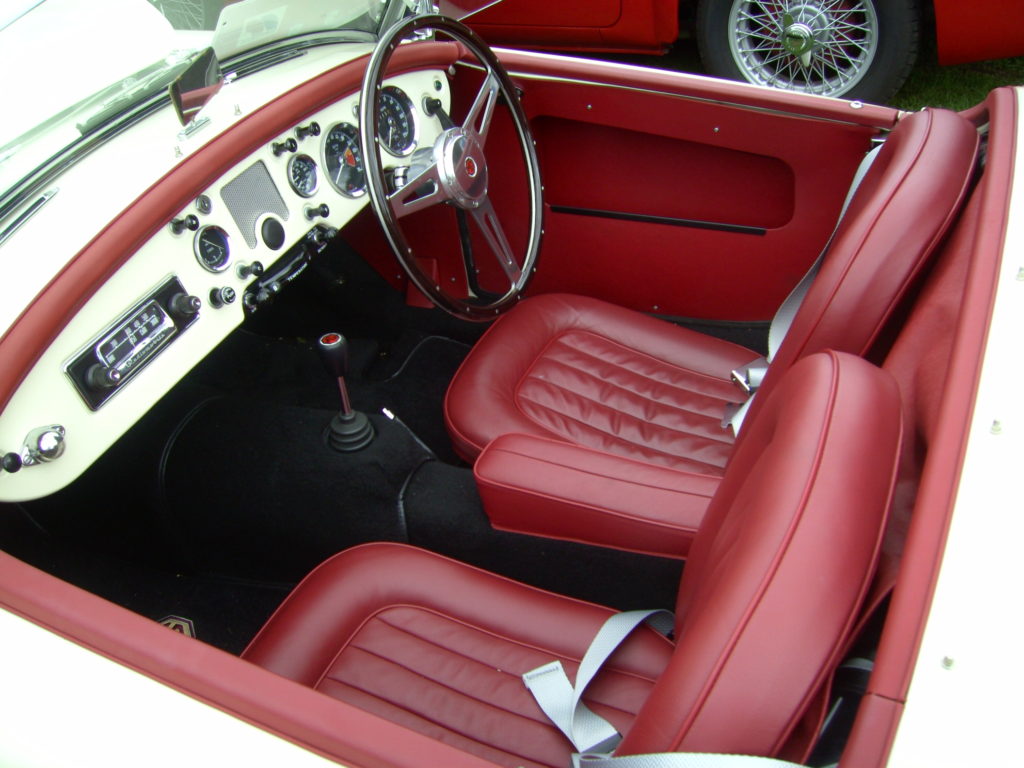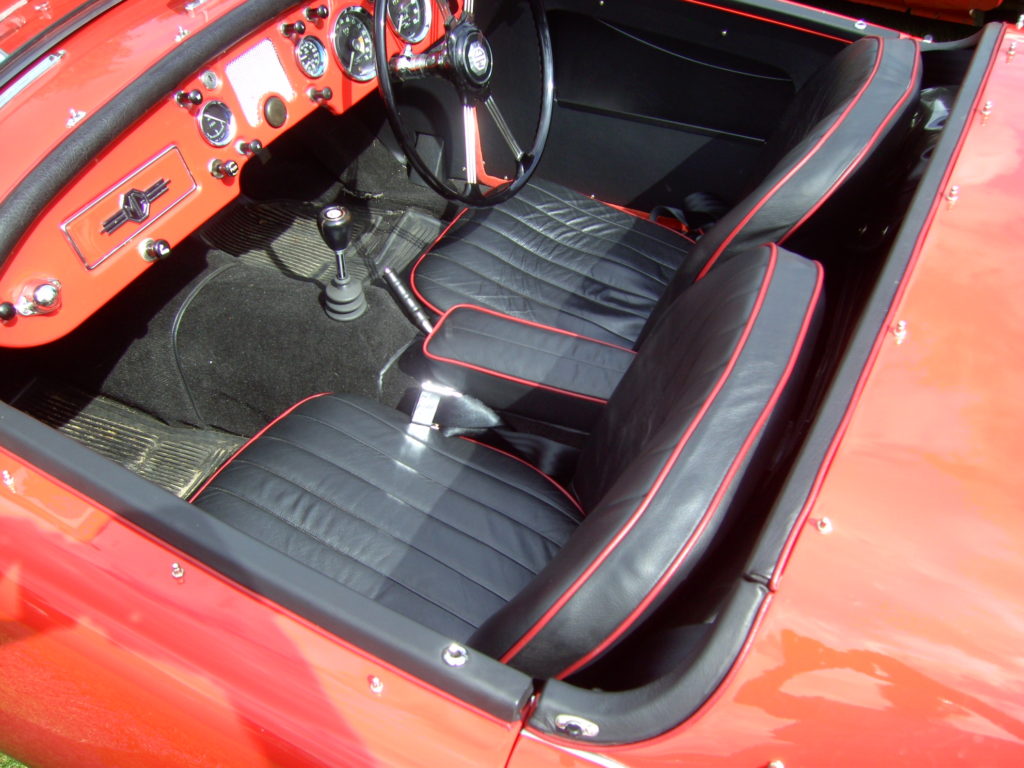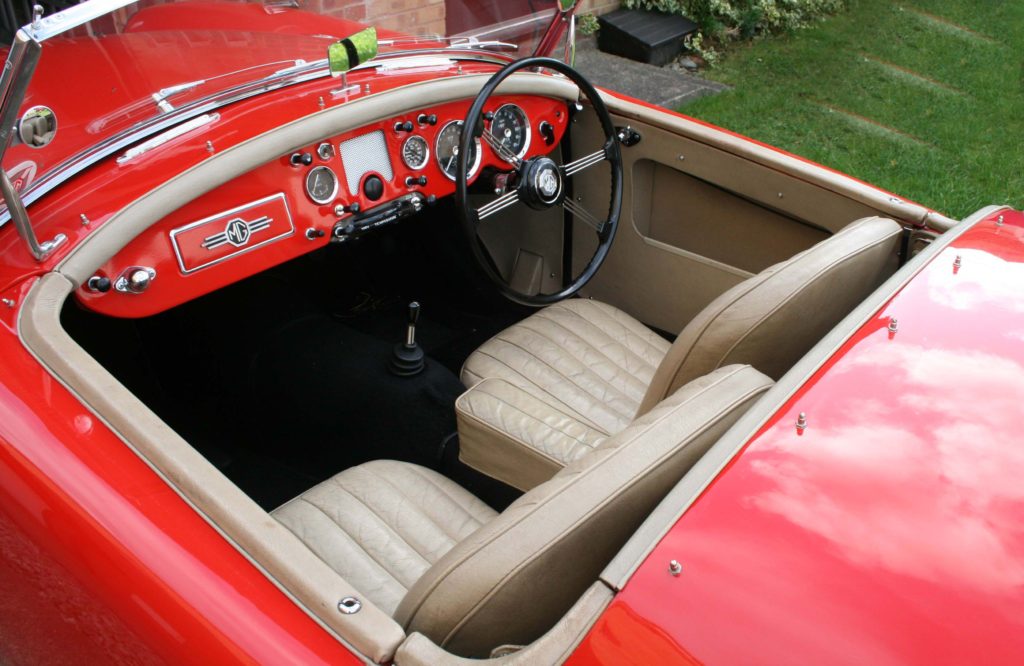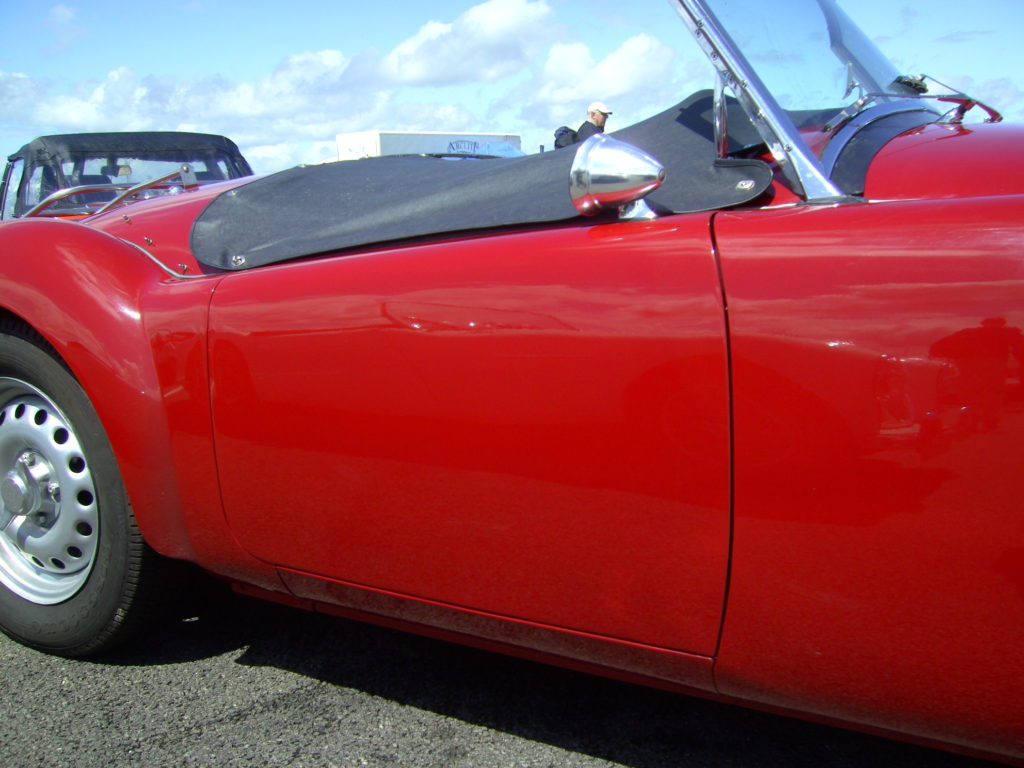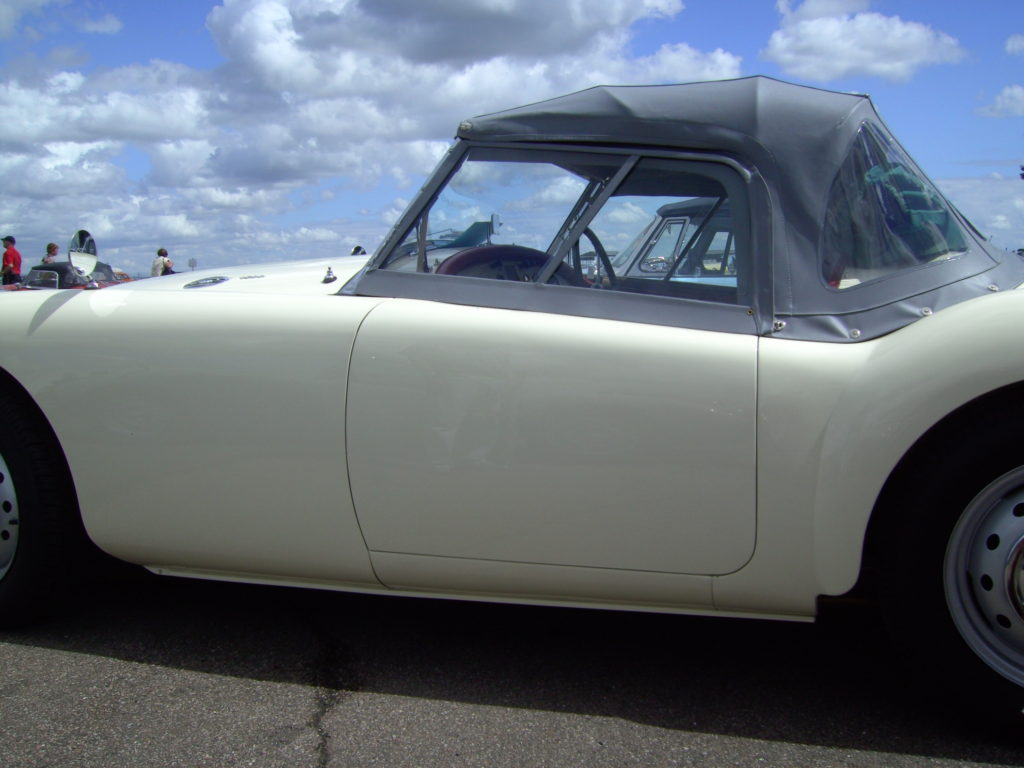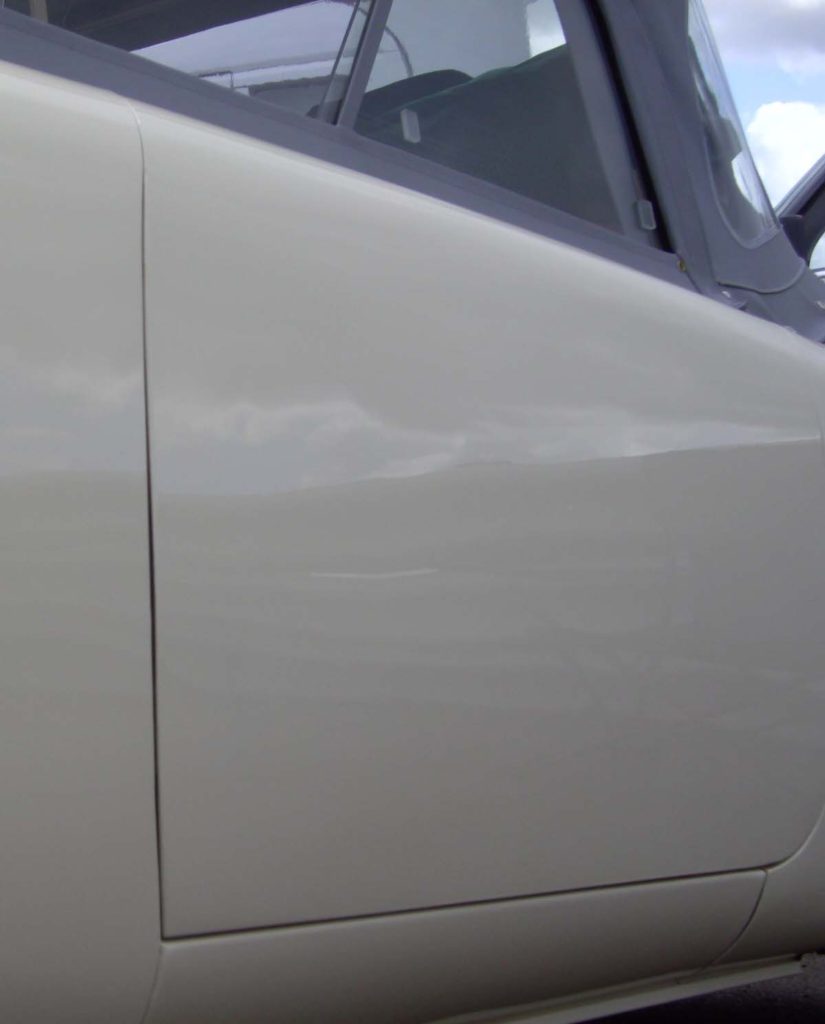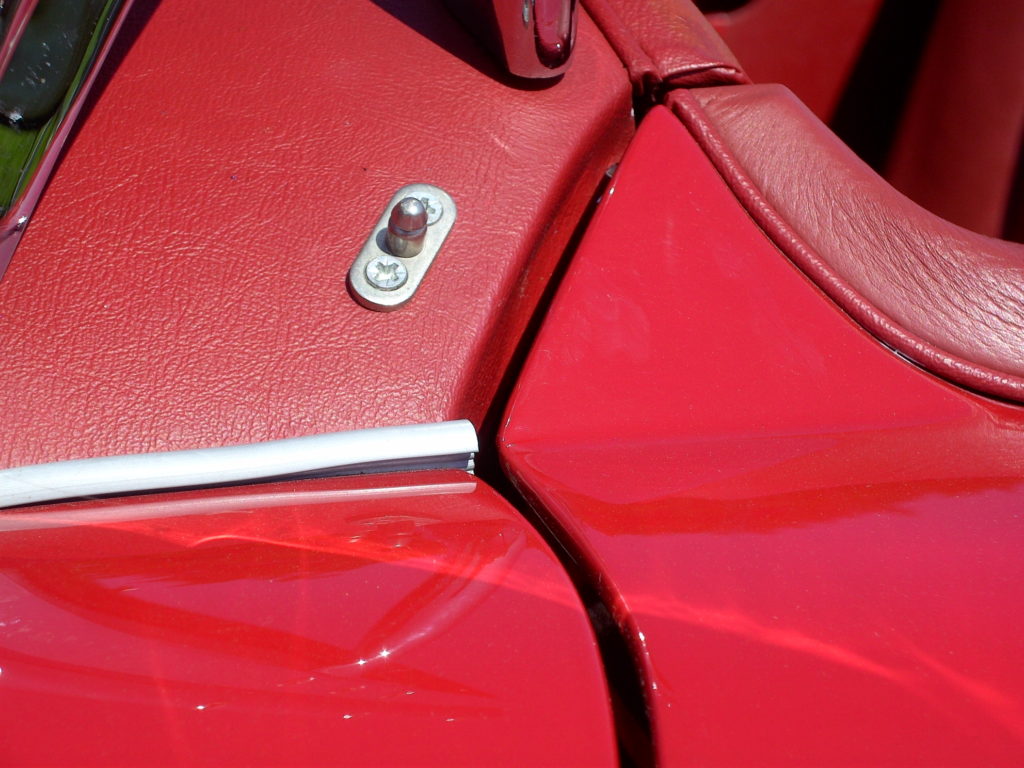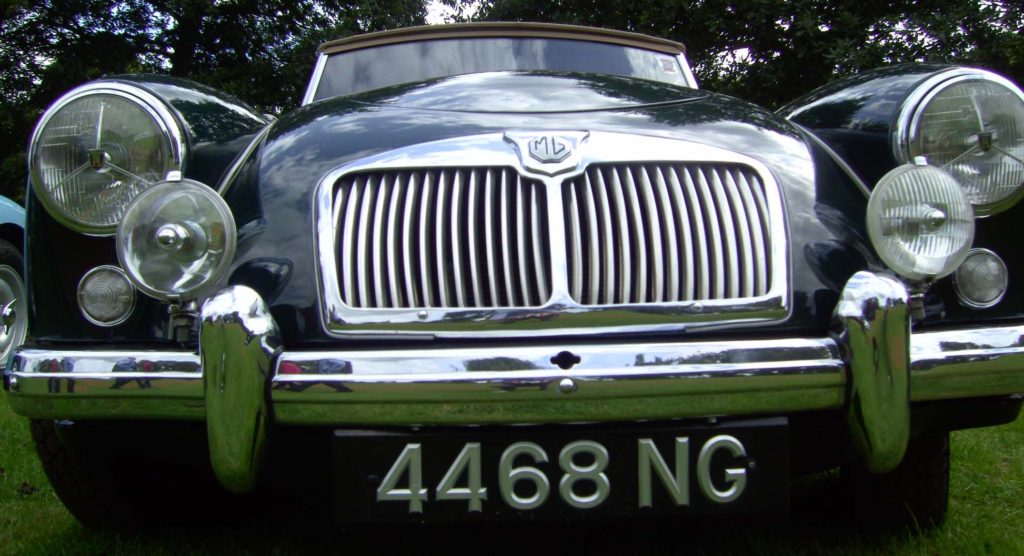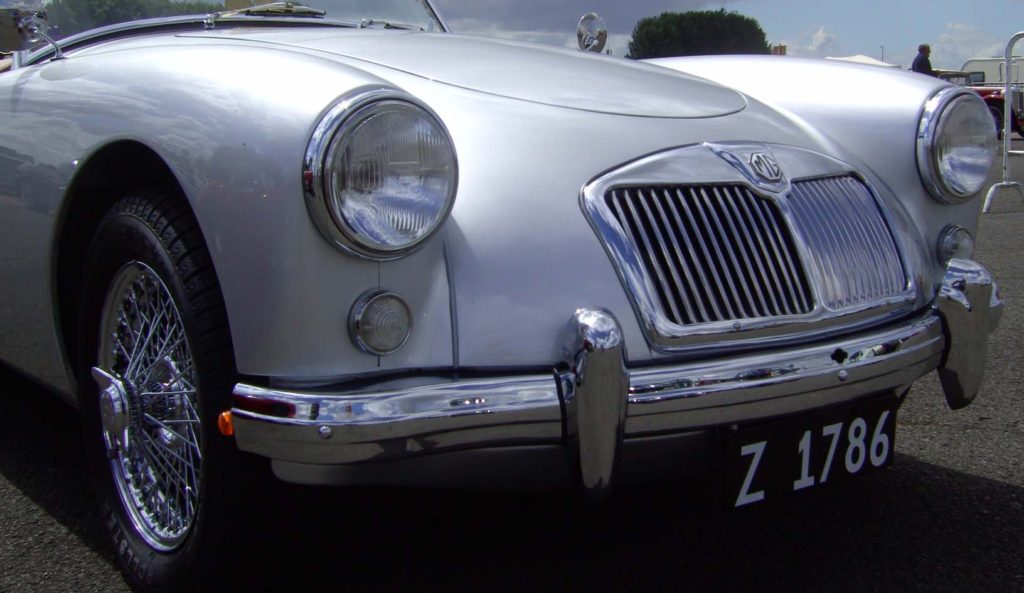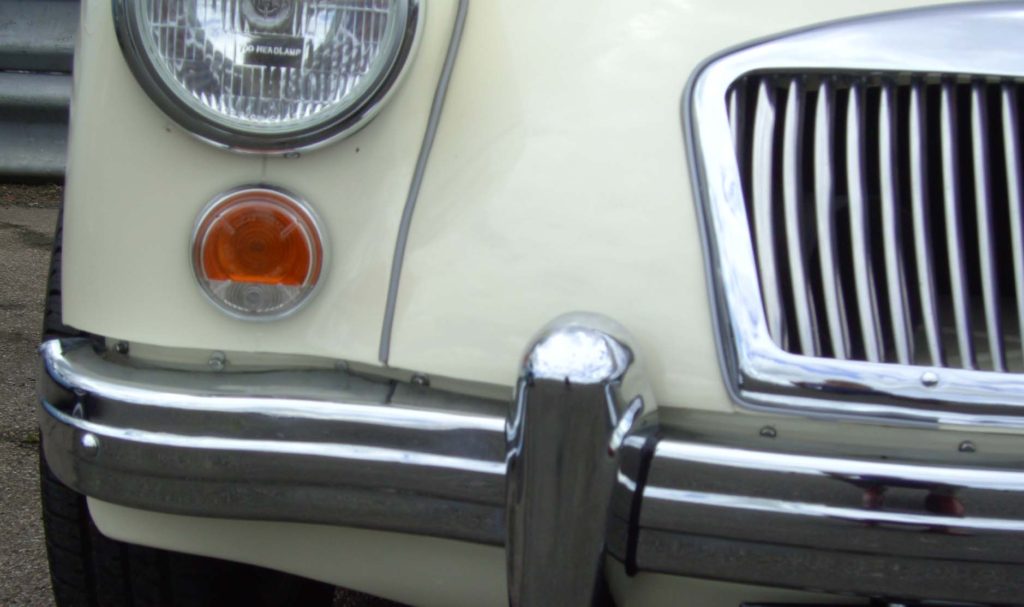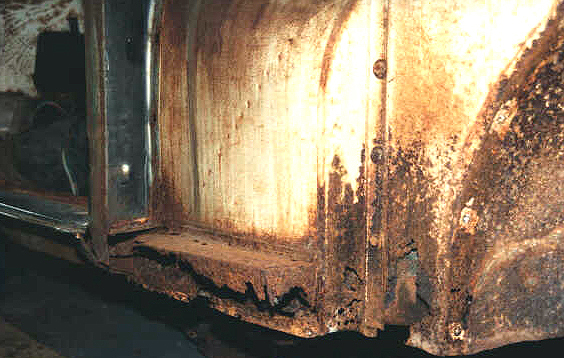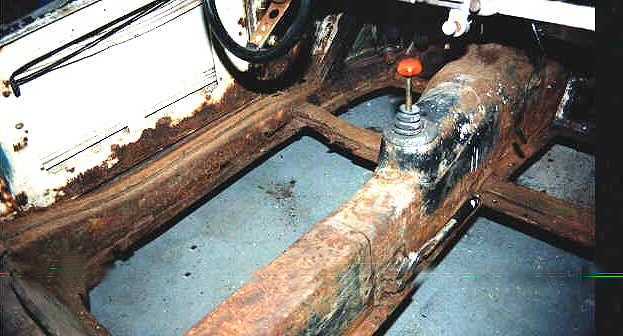So you want to buy an MGA?
Edited by George Dutton
On behalf of the MGA Register and the Twin Cam Group
First of all, be aware that owning an MGA will be a life-changing event. Your social world will be opened up the pleasures of driving a car of classic appeal. Total strangers will stop and talk to you at traffic lights and in car parks wanting to know when the car was made and telling you how pretty it looks. Small boys will shout “nice car Mister” as you drive by.
The down-side is the worry that comes when something has gone wrong and you lie awake trying to figure out how to fix it. That’s when MGA Register can help with technical advice and information about where to buy spares. With just a few tools and a basic understanding of how cars work, the MGA is a simple and accessible vehicle for the owner to maintain.
History and Development
The flowing, organic lines of the MGA can be traced back to the 1951 Le Mans car UMG 400 also known as the EX172 designed by Syd Enever.
This led to the EX175 project with only one car HMO 6 built in 1952. Internal pressures within the British Motor Corporation delayed development until 1954 when EX 182 the prototype for the MGA was approved. The cars ran at Le Mans in June 1955 with the first production models delivered one month later.
Model range and Production figures
The basic shape to the MGA ran throughout its production period. The open tourer or roadster version was joined by the closed coupe in September 1956. Specific models in the table below are named by the engine type. A De Luxe variant introduced in April 1960 offered the choice of all round Dunlop Disc Brakes and centre-lock wheels together with the interior trim from the Twin Cam cars.
| 1955 | 1956 | 1957 | 1958 | 1959 | 1960 | 1961 | 1962 | Total | |
| Models | |||||||||
| 1500 roadster | 1003 | 13394 | 16467 | 14811 | 6803 | 52478 | |||
| 1500 coupe | 16 | 4104 | 1311 | 841 | 6272 | ||||
| Twin Cam roadster | 493 | 1256 | 39 | 1788 | |||||
| Twin Cam coupe | 48 | 263 | 12 | 323 | |||||
| 1600 Mk I roadster | 12938 | 15428 | 294 | 28660 | |||||
| 1600 Mk I coup | 1218 | 1447 | 94 | 2759 | |||||
| De Luxe 1600 Mk I roadster | 50 | 20 | 70 | ||||||
| De Luxe 1600 Mk 1 coupe | 5 | 7 | 12 | ||||||
| 1600 Mk II roadster | 5137 | 2771 | 7908 | ||||||
| 1600 Mk II coupe | 403 | 95 | 498 | ||||||
| De Luxe 1600 Mk II roadster | 117 | 173 | 290 | ||||||
| De Luxe 1600 Mk II coupe | 13 | 10 | 23 | ||||||
| Total | 1003 | 13410 | 20571 | 16663 | 23319 | 16981 | 6085 | 3049 | 101081 |
Identification of any car is best done by an examination of the rear lights.
MGA 1500
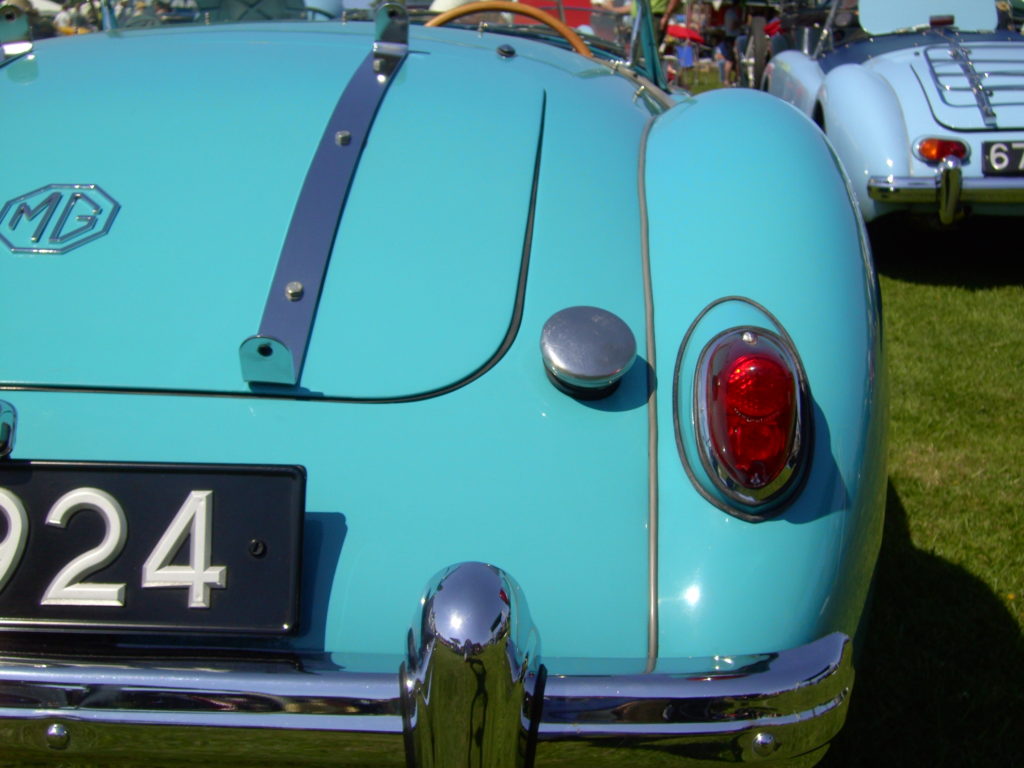
The 1500 series has a single red tail and stop lamp which flashes as the turn indicator.
MGA 1600 MK I
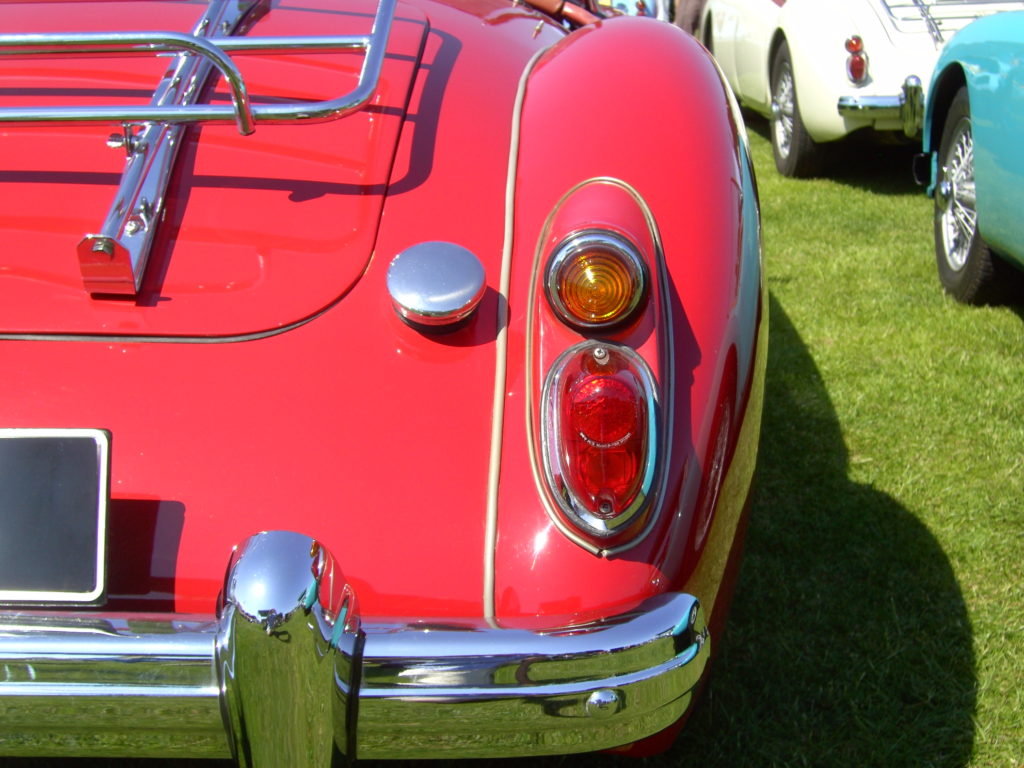
1600 Mk 1 cars have a rear plinth to incorporate the amber turn indicator plus small, chromed “1600” badges on the boot and the front shroud. Next, check if it has the Dunlop centre-lock type fitted to cars with the Twin Cam engine and the “Twin Cam” badges.
MGA 1600 MK II
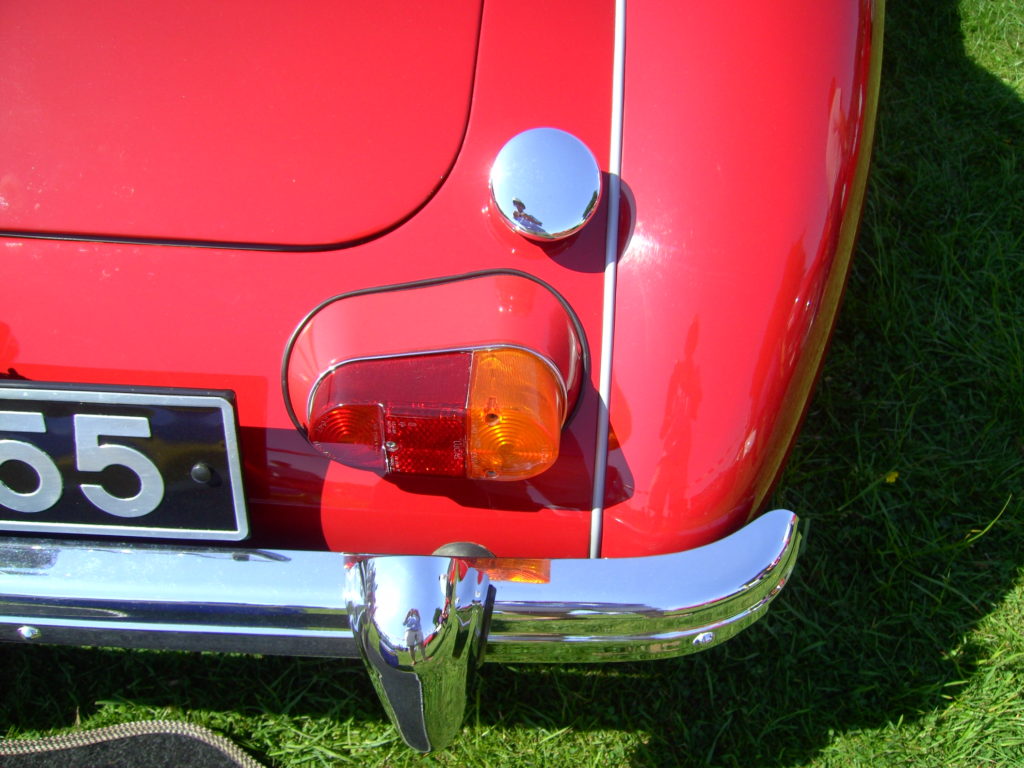
1600 Mk II cars have the rear light clusters mounted below the boot lid, a modified front grille and “1600 Mk II” badges. A Mk II car with Dunlop centre-lock wheels and all round Dunlop disk brakes will be a De Luxe version.
Factory Colour schemes
Black and Old English White were available on all models.
Orient Red (left) available on 1500 models. Chariot Red (right) available on 1600 models.
Ash Green (left) available on all 1500 models. Glacier Blue (right) on 1500 roadsters only.
Dove Grey (left) and Iris Blue (right) available on 1600 models.
Alamo Beige (left) is a 1600 colour. Tyrolite Green (right) appeared only on early 1500 roadsters.
Mineral Blue (left) and Island Green (right) are exclusive to the 1500 coupe.
Interior trim of an MGA is comfortable and simple. The standard colour schemes are red, black and beige. The white car has the optional De Luxe seats.
What to look for
Now reaching 50+ years of age, almost all MGAs will have been subject to restoration. Ask to see a photographic record of the restoration and bills for the work and parts. Find out if the car was stripped to bare metal and how it was re-painted. The wiring loom should have been replaced.
Check that the body was repaired on its chassis as this helps to ensure the correct panel fit when the car is reassembled. The quality of the restoration work will determine the condition of the car and the price to be offered. The first thing to look at is the fit of the panels, doors in particular. This is how it should look.
Seen in close up, the white car is just about perfect, the door gap on the red car is good but should not be any wider.
Look also for a straight line across the front of the car where the two wings and body shroud meet the valance. The top of the front bumper should be a tight fit under the bodywork. On the white car the gap is too big, those bolts holding the valance should not be visible.
Corrosion will almost certainly be found on unrestored cars and may not have been properly dealt with on cars that have been restored. The “hot spots” are the inner and outer sills of the body and the chassis rails where the wooden floor is fixed. These below are extreme examples, yet this car was restored.
Understanding the numbers
There are three sets of numbers to be found on an MGA which will help to confirm its identity and age.
The chassis or car number (now known as the Vehicle Identification number or VIN) is stamped on a square metal plate screwed to the shelf next to the heater. The VIN is a prefix of letters and numbers followed by / numbers. Four separate systems of prefix were used during the production run.
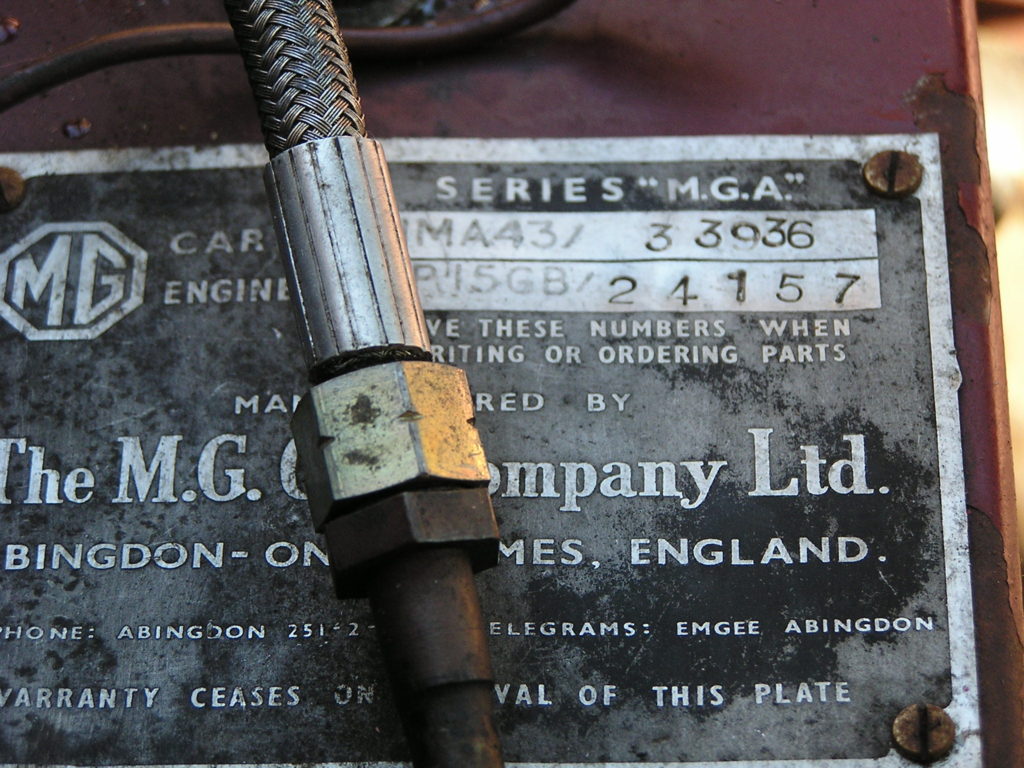
MGA 1500 Cars /10101 to /68850 have a prefix of three letters and two numbers.
HD is a 1500 roadster, HD is a 1500 coupe
Third letter colour A black, C Orient red, D Glacier Blue on roadsters Mineral Blue on coupes, E Tyrolite Green, K Orient Red from 1956, L Glacier Blue from 1956, R Old English White, T Island or Ash Green from 1956, H Primer or “Knocked Down” finish.
First number gives the specification, 1 RHD home market, 2 RHD export, 3 LHD export, 4 LHD North American export, 5 RHD Completely Knocked Down export, 6 LHD CKD export.
Second number is the type of paint. 3 cellulose, 5 Primer or CKD finish.
MGA 1600 Mk I cars /68851 to /100351 have a prefix of three or four letters
GHN is a 1600 roadster, GHD is a 1600 coupe
Fourth letter optional L for left hand drive.
MGA 1600 Mk II cars /100352 to /109070 use the same three or four letter prefix as the Mk I followed by number 2.
MGA Twin Cam cars /501 to /2611 have a prefix of two letters and one number.
YD1 Roadster RHD home market YD2 RoadsterRHD export, YD3 Roadster LHD export YD 5 Roadster RHD CKD.YM 1 Coupe RHD home market, YM2 CoupeRHD export, YM3 Coupe LHD export, YM5 Coupe RHD CKD
The second number to look for is the body number found on a small oval shaped plate welded to the bulkhead inside the engine bay near to the left hand bonnet hinge as seen from the front of the car. Specific body numbers were not recorded at the time a car was built, however by reference to the MGA Register it is possible to date a car from its body number.
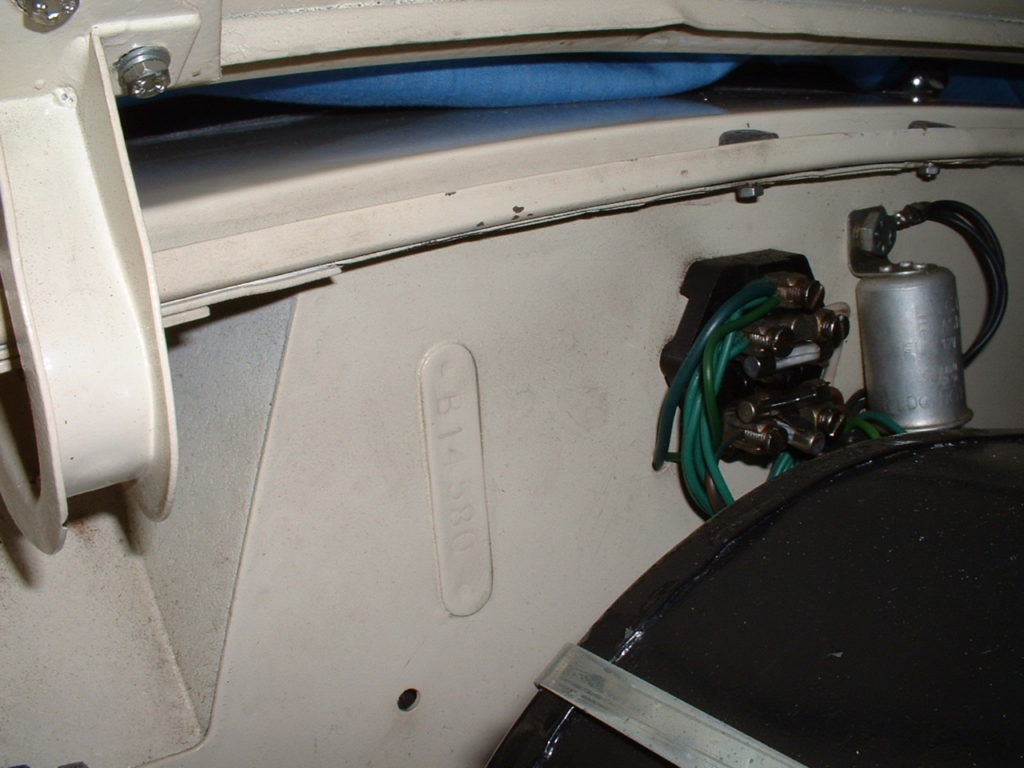
For details of engine numbers refer to the section below on engines.
Engines
All MGAs are powered by the same basic pushrod engine, the BMC B-series introduced in 1953 on the MG Magnette ZA. The 1500 engine is 1489 cc, (73.025 x 88.9mm) and can be identified by the following letters reverse stamped into the plate on the cylinder block below spark plugs nos. 2 and 3. BP15GB on engines from 1955 up to June 1957. 15GB-U-H from June 1957 until January 1959. 15GD-U-H from January 1959 until May 1959. Power output is 68 bhp at 5500rpm.
The 1600 engine gives 79.5 bhp at 5600rpm from its 1588cc (75.39 x 88.9mm) and carried the letters 16GA-U-H throughout its production from May 1959 to March 1961. In April 1961, the bore was increased to 76.2mm giving a capacity of 1622cc and output of 90 bhp at 5500rpm. Known as the 1600 MkII engine these units carry the letters 16GC-U-H (or L for low compression ratio).
When buying a car with the B series pushrod engine there are no special points to look for in terms of mechanical defects. Water leaks do occur from the head gasket between cylinders 2 and 3. All MGA engines leak oil from the rear of the crankshaft, get the engine hot and run it for 5 minutes over a clean sheet of paper. A few drops of oil are to be expected but a puddle will be expensive to repair.
Design work for the Twin Cam engine began in 1955 although the Twin Cam MGA did not appear until April 1958. Engine numbers are stamped on plate riveted to the rear of the cylinder block 16GB-U/101 to 2272. The twin cam engine is 1588cc (75.39 x 88.9mm) with its distinctive aluminium alloy cylinder head. The cam shafts are driven by a duplex chain and the engine produces 108 bhp in its original, high compression, form.
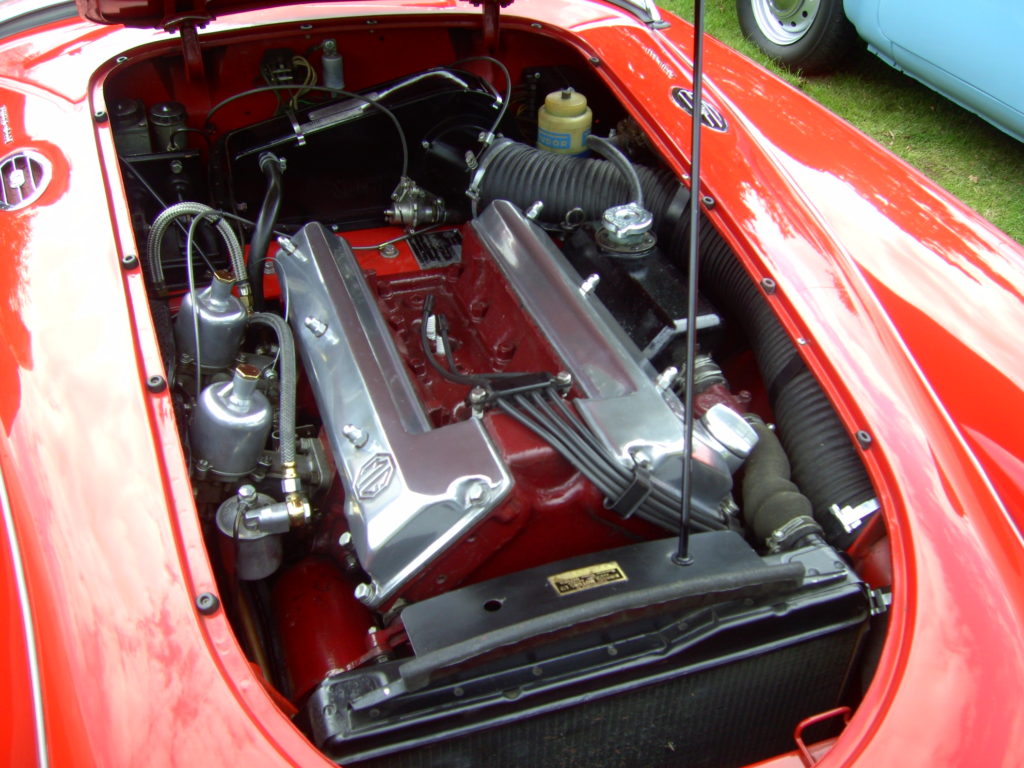
The unreliability of the twin cam engine led directly to its withdrawal from production in 1960. Many of the surviving cars had push rod engines fitted leaving a supply of unwanted engines for spares and repair over the next 40 years. Today, the engine in a twin cam is likely to have been “sorted” by fitting lower compression pistons. But “buyer beware”, re-building a twin cam engine is both a science and an art. Mistakes can be very, very expensive. Find out from the seller who has built the engine and before you buy the car, check the name with the Twin Cam Group of the MG Car Club.
Optional Extras and modifications
Throughout the production life of the MGA, the Works listed a comprehensive range of factory fitted extras. Many of these will have survived on cars being offered for sale. The Smiths heater is the most popular. Others include twin horns, anti roll bar, wood rim competition steering wheel, wire wheels with 48, 60 or 72 spokes and a hard top in either aluminium or glass fibre. Note: for cars with a hard top, the optional aluminium side screens should be fitted.
Products from the after market range of accessories are found on most MGAs, such as Lucas fog and spot lamps, wing mirrors, chrome luggage rack or a period radio with speaker.
Over the years owners have sought to modify and improve the performance of their MGA, especially the engine, electrical and transmission systems. On cars with the standard engines, it is common to find “bolt on” tuning equipment to boost performance. These include high lift cam shafts, larger size S.U. or Weber carburettors and cross flow cylinder head, even superchargers! MGB engines of every shape and size find their way into MGAs. Built on the same basic cylinder block, the installation of a “B” engine needs no modification to the chassis or bodywork of a car built after January 1959.
The electrical modifications made to an MGA take account of improvements in technology over the past 50 years. Typically, a single 12volt battery to replace two 6 volt, changeover to negative earth, an alternator in place of the dynamo, electronic ignition and halogen headlamp bulbs. On 1500 cars, the addition of yellow flashing indicator lamps at the rear is a significant help in today’s traffic.
“Transforming the car” is how most owners describe the result of fitting a 5 speed gear box. Conversion involves mating a second hand Ford Sierra Type 9 (1982 to 1991) gear box with an off the shelf conversion kit from a specialist supplier. Gear ratio on second is slightly higher than original, first, third and fourth are identical to the MGA gearbox, the benefits are synchromesh on all gears plus the fifth gear for high speed cruising.
The question of “originality” is one for each MGA owner to decide for themselves, MGA Register actively encourages the preservation and continued use of all cars regardless of condition. We can advise on how the cars were built when new and can offer an inspection service to prospective owners. For contact details see the MGA Register section of “Safety Fast!”
Prices
At the time of writing, October 2009, there has been some sudden and marked upward movement in prices. However, it is a little too early to judge if this is a clear sign of permanently higher prices.
The following guide prices are typical of cars currently on offer for a private sale. Expect to pay up to 20% more for cars offered by traders and very much more for cars with proven history in competition at international level.
A car which has been restored, is in good working condition and does not require any immediate repair work.
MGA Roadster £18000
MGA Coupe £15000
The above values apply to 1500, 1600 Mk I and 1600 MKII cars
Twin Cam Roadster £28000
Twin Cam Coupe £25000
De Luxe Roadster £24000
De Luxe Coupe £24000
At the other end of the scale, an unrestored car which is substantially complete and may not be running will cost these prices. Then expect to pay more than £10000 on restoration even if you can do most of the work yourself.
MGA Roadster £4000
MGA Coupe £2000
Cars that fall between these descriptions will be in need of some repair or restoration work either now or in the near future. A guide price of £10000 to £14000 will buy a car in roadworthy condition capable of regular use. The choices for the owner are, to leave it alone until something breaks, plan a rolling restoration or spend the money now and turn it into first class order.
Many MGAs now in the UK have been reimported from the United States or South Africa as restoration projects. These cars will have been converted to right hand drive and carry “age related” DVLA registration numbers. Values will be the same as cars built for the home market and are not seen as in any way inferior.
Books to read before buying an MGA
“Original MGA” by A D Clausager. Published by Bay View Books ISBN 1 870979 31 1 Essential reading before you set out to look for an MGA. Now out of print but occasionally on offer from specialist book dealers.
“MGA A History and Restoration Guide” by R P Vitrikas. Published by Scarborough Faire. ISBN 0 9621881 1 5
“Call it MGA” by R Martin and P Hubbard. Published by MGA Register of the MG Car Club.
“The MGA, MGB and MGC” by Graham Robson. Published by MRP Collector’s Guide
“The A, G and C” by Chris Harvey. Published by Oxford Illustrated Press.
“MGA The Complete Story” by David G Styles. Published by Crowood.
“MGA Restoration Guide” by Malcolm Green. Published by Brooklands Books.
“The MGA First of a new line” by John Price Williams. Published by Veloce.
“MG Twin Cam the First 50 Years” edited by John Tofts. Published by The Twin Cam Group of the MG Car Club.

 MG Car Club
MG Car Club